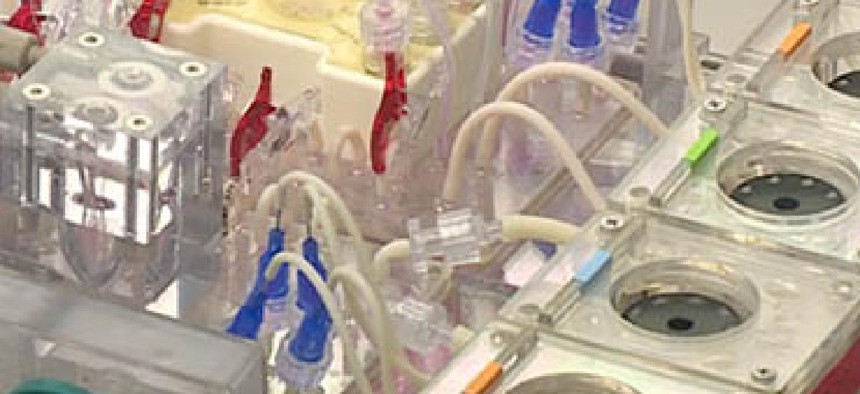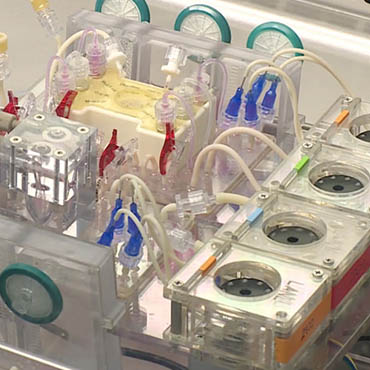Organs the size of a smartphone screen

“Homo minutus” could revolutionize the way biologists and medical personnel screen new drugs or toxic agents.

The ATHENA project, funded by the Defense Threat Reduction Agency, could revolutionize the way new drugs are tested. (Image: Los Alamos National Laboratory)
National laboratory and university researchers are honing the software and analytics capabilities of a surrogate human, of sorts, that will be able to step into the testing process for new drugs.
The Advanced Tissue-engineered Human Ectypal Network Analyzer (ATHENA) project has created interconnected, surrogate human organs, researchers said in a new video. The system could revolutionize the way biologists and medical personnel screen new drugs or toxic agents, according to a statement from Los Alamos National Laboratory.
ATHENA is funded by the Defense Threat Reduction Agency and is a collaboration of Los Alamos, Harvard University, Vanderbilt University, Charité Universitätsmedizin in Berlin, Germany, CFD Research Corp., and the University of California at San Francisco.
A video posted by the lab on June 21 shows how the program is nearing the full integration of four artificial human organs -- liver, heart, lung and kidney -- that are each about the size of a smartphone screen. The whole ATHENA “body” of interconnected organs will fit neatly on a desk. Each component, when the sensors and software that run them are integrated with one another, will be able to "talk" to the others about how outside influences – drugs, for example -- are affecting them. That feedback can be used by the other components to show possible interactions in its operation, showing some of the complex, cross-system effects drugs might have.
"We're pushing the envelope on getting information from these small devices," said Stacy Sherrod, assistant professor of chemistry at Vanderbilt.
“By developing this ‘homo minutus,’ we are stepping beyond the need for animal or Petri dish testing: There are huge benefits in developing drug and toxicity analysis systems that can mimic the response of actual human organs,” Rashi Iyer, a senior scientist at Los Alamos, said in a statement.





